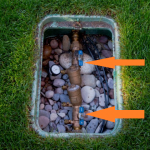Backflow prevention is essential for protecting our drinking water from the dangers of backflow. Backflow Solutions, Inc. (BSI Online) administers our Backflow Prevention Program, ensuring backflow prevention devices are installed and maintained in compliance with federal, state, and local codes.
Save
Save
Save
Save
Backflow is the reverse flow of water, causing non-potable water to flow into the public water supply. Backflow can occur when changes in water pressure create a suction effect, forcing non-potable water into the City’s drinking water supply.
For example, when a main water line breaks, the water pressure in the pipe is drastically reduced. The reduced pressure causes a suction effect and any substance in the pipe on the customer’s side is then drawn up into the system, contaminating the City’s water supply.
Backflow Prevention
Backflow prevention devices are used to protect our potable water supply from contamination due to backflow.
Without these barriers, water that is no longer safe for consumption, such as water from pools, irrigation systems, restaurants, and medical facilities, could travel into the City’s water supply and contaminate the drinking water.
Typically, backflow prevention devices are required for plumbing system connections that contain chemicals or industrial fluids, irrigation systems, fertilizers, or auxiliary water sources (including reclaimed water).
Residential properties with irrigation systems, pools, or fire sprinkler systems are required to have a backflow prevention device. These devices are typically located by the curb in a separate box by your water meter box.
For help determining if you have a backflow device, please contact Backflow Prevention.
The City sends notifications, through BSI Online, to residents and businesses 30 days prior to their testing due date.
- Hire a Registered Backflow Tester
- Provide your Customer Confirmation Number (CCN), located on the notice, to your Tester.
- Check your test report status using your CCN at BSIOnlineTracking.com.
- Perform the required test.
- Submit all test reports through BSIOnlineTracking.com.
- Pay $12.95 per test report submitted.
Backflow prevention devices are mechanical devices containing springs and other moving parts that are subject to wearing down or breaking. Routine maintenance and testing are necessary to ensure the device is working appropriately. Depending on the degree of hazard, backflow prevention devices need to be tested either annually or once every 7 years.
- Annual Testing is required for High Hazard devices. These devices are typically used for non-residential purposes, such as hospitals, restaurants, industries, etc., in which there is a high risk of contamination. Residential pools with auto-fill are also required to have a high hazard device and have it tested annually.
- 7 Year Testing is required for Low Hazard devices. These devices are typically used for residential purposes, such as irrigation systems. The risk of contamination is much lower than those considered high hazard; therefore, testing is only required once every 7 years.
If the backflow device is not tested within the allotted time frame, the City will have it tested, and a testing fee of $75 plus the actual cost of each test will be charged to your water bill.
If you had your device tested and it did not pass, you will have 30 days to have the device repaired and retested.
If the City had your device tested and it did not pass, the actual cost of the repairs and the retest will be added to your water bill.
Potable vs. Non-Potable
Potable water is safe for consumption. This water has been properly treated so that it is safe for drinking, bathing, and cooking.
Non-potable water is NOT safe for consumption. This is water that either did not go through the same treatment process as potable water or it has been properly treated but has since become contaminated. Many factors can make potable water become non-potable, such as exposure to chemicals, gasses, pollution, infective agents, or any other contaminant.
Save
Save
Save
Save
Information for Backflow Testers
To become an approved backflow prevention assembly tester within the City, you must provide to BSI Online proof of commission licensing and proof that your testing equipment can maintain calibration of plus or minus 0.2 psid accuracy.
- Backflow Prevention Assembly Tester (BPAT) license and gauge calibration certification must be submitted and maintained before any backflow test reports will be entered into the system. Information can be submitted via mail, fax, or email.
- Reports will be rejected if the updated license and gauge information are not on file and available upon request of the City Backflow Official.
Per the City’s Code of Ordinances and the Texas Commission on Environmental Quality, backflow prevention devices must be tested as outlined below.
- Annual Testing is required for High Hazard devices. Devices typically used for non-residential purposes, such as hospitals, restaurants, industries, etc., have a high risk of contamination from backflow into the water system. Residential pools with auto-fill are also required to have a high hazard device and have it tested annually.
- 7 Year Testing is required for Low Hazard devices. Devices typically used for residential purposes, such as irrigation systems. The risk for contamination is much lower than those considered High Hazard; therefore, testing is required once every 7 years.
If the property owner and/or person in control of the backflow device fails to have the device tested within the allotted time frame, the City will have the device tested, and a testing fee of $75 plus the actual cost of each test will be applied to the owner’s water bill.
If the device is tested and does not pass, the property owner will have 30 days to have the device repaired and retested. If the City had the device tested and it did not pass, the actual cost of the repairs and the retest will be applied to the owner’s water bill.
New Installations and Backflow Permits
New installation inspections and backflow permits are processed in the Building Inspections Division, located at 301 W. Bagdad Ave, Round Rock, TX 78664, Phone: 512-218-6600, Fax: 512-218-5563, or Email: Chief Building Official.
Backflow Prevention
3400 Sunrise Road
Round Rock, Texas 78665
Phone: 512-218-5575
Fax: 512-218-6649
Email: backflow@roundrocktexas.gov


